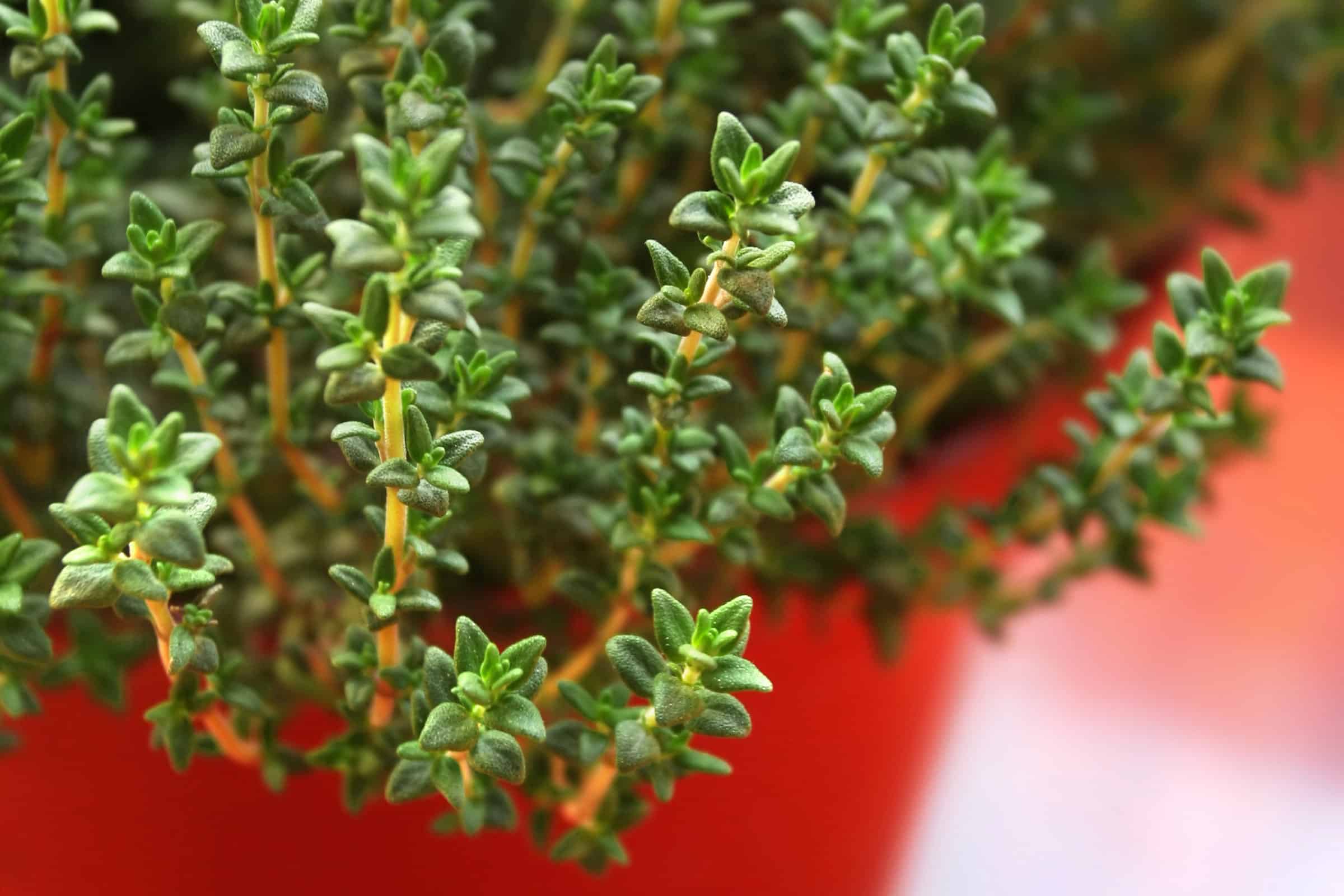Rosemary & Thyme: A Culinary Guide To Herb Gardening

Table of Contents
Choosing the Right Rosemary and Thyme Varieties for Your Garden
Selecting the appropriate rosemary and thyme varieties is crucial for a successful herb garden. Understanding their unique characteristics ensures you choose plants that thrive in your specific environment and suit your culinary preferences.
Rosemary Varieties:
- Upright Rosemary: A classic choice, characterized by its tall, upright growth habit. Ideal for borders or containers, it offers a strong, traditional rosemary flavor.
- Prostrate Rosemary: Also known as creeping rosemary, this variety spreads horizontally, making it perfect for ground cover or cascading over walls. Its flavor is slightly milder than upright rosemary.
- Trailing Rosemary: Similar to prostrate rosemary, this variety features long, trailing stems, ideal for hanging baskets or containers. Its flavor is often described as slightly sweeter.
Thyme Varieties:
- English Thyme: A common and versatile type, known for its classic thyme flavor. Excellent for culinary use and ground cover.
- Lemon Thyme: Offers a refreshing citrusy twist to the traditional thyme flavor. Ideal for adding a bright, zesty note to dishes.
- Creeping Thyme: A low-growing variety, perfect for rock gardens or as a ground cover. Its flavor is similar to English thyme, but slightly milder.
Comparing Rosemary and Thyme Varieties:
| Variety | Growth Habit | Flavor Profile | Suitability For |
|---|---|---|---|
| Upright Rosemary | Tall, upright | Strong, traditional | Borders, containers |
| Prostrate Rosemary | Spreading | Mild | Ground cover, walls |
| Trailing Rosemary | Trailing | Slightly sweet | Hanging baskets, containers |
| English Thyme | Bushy | Classic thyme flavor | Culinary use, ground cover |
| Lemon Thyme | Bushy | Citrusy | Culinary use |
| Creeping Thyme | Low-growing | Mild, classic thyme | Rock gardens, ground cover |
Choosing the right herbs for your garden requires considering your space, gardening style (pots, borders, etc.), and preferred flavor profiles. This careful herb selection sets the stage for a flourishing herb garden.
Sowing and Planting Your Rosemary & Thyme Herb Garden
Establishing your rosemary and thyme herb garden involves careful planning and execution. Whether starting from seeds or using seedlings/cuttings, the process requires attention to detail.
Starting from Seeds:
- Timing: Sow seeds indoors 6-8 weeks before the last expected frost.
- Seed Starting Mix: Use a well-draining seed starting mix.
- Planting Depth: Sow seeds about ¼ inch deep.
- Germination: Keep the soil moist but not soggy. Germination typically takes 2-4 weeks.
Planting Seedlings or Cuttings:
- Spacing: Allow ample space between plants (12-18 inches for rosemary, 6-12 inches for thyme).
- Soil Preparation: Amend the soil with compost or other organic matter to improve drainage and fertility.
- Planting: Plant seedlings or cuttings at the same depth they were growing in their containers.
- Watering: Water thoroughly after planting.
Ideal Location:
- Sunlight: Rosemary and thyme need at least 6-8 hours of direct sunlight daily.
- Drainage: Well-drained soil is essential to prevent root rot.
- Soil Type: Both herbs prefer slightly alkaline soil (pH 6.0-7.5).
Following these steps for planting rosemary and thyme ensures a strong start for your herb garden. Proper herb propagation is key to their success.
Caring for Your Rosemary and Thyme Plants
Consistent care is essential for healthy, flavorful rosemary and thyme plants. Proper watering, fertilization, pest control, and pruning techniques contribute to their long-term health and yield.
Watering:
- Avoid Overwatering: Allow the soil to dry slightly between waterings to prevent root rot.
- Deep Watering: When you water, do so deeply to encourage deep root growth.
Fertilizing:
- Organic Fertilizers: Use compost, aged manure, or other organic fertilizers to nourish the plants.
- Balanced Fertilizer: A balanced, slow-release fertilizer can also be used sparingly.
Pest and Disease Control:
- Organic Pest Control: Use insecticidal soap or neem oil to control pests.
- Good Air Circulation: Ensure good air circulation to prevent fungal diseases.
Pruning and Harvesting:
- Pruning: Pinch back new growth regularly to encourage bushier plants and prevent them from becoming leggy.
- Harvesting: Harvest leaves regularly to encourage new growth and maintain flavor.
These rosemary care and thyme care tips will keep your herbs healthy and productive. Proper herb maintenance is key to maximizing yields.
Using Your Homegrown Rosemary and Thyme in the Kitchen
The culinary applications of homegrown rosemary and thyme are virtually limitless. Their distinct flavors enhance a wide array of dishes.
Culinary Versatility:
- Roasted Meats: Rosemary and thyme are classic companions to roasted lamb, chicken, and pork.
- Soups and Stews: Add depth and complexity to hearty soups and stews.
- Breads: Incorporate them into bread dough for aromatic loaves.
- Vegetables: Use them to season roasted vegetables or add them to stir-fries.
Quick Recipes:
- Rosemary Roasted Potatoes: Toss potatoes with olive oil, rosemary sprigs, salt, and pepper before roasting.
- Thyme-infused Chicken Broth: Simmer chicken bones with thyme sprigs, carrots, and celery to create a flavorful broth.
The vibrant flavors of fresh rosemary and thyme far surpass dried herbs. Experiment with incorporating them into your favorite dishes and discover new culinary adventures!
Reap the Rewards of Your Rosemary & Thyme Culinary Herb Garden
Growing your own rosemary and thyme is a rewarding experience, providing you with fresh, flavorful herbs year-round. From choosing the right varieties and planting to nurturing your herbs and using them in your cooking, this guide has provided you with the tools for success. Remember the benefits: fresher herbs, cost savings, and the sheer satisfaction of harvesting your own culinary delights! Start your own culinary herb garden today and experience the delicious difference of fresh rosemary and thyme! Explore the world of herb gardening and enjoy the bountiful harvest.

Featured Posts
-
 Adverse Drug Test Munguia Responds With Denial
May 31, 2025
Adverse Drug Test Munguia Responds With Denial
May 31, 2025 -
 Decoding Veterinary Watchdog Reports What You Need To Know
May 31, 2025
Decoding Veterinary Watchdog Reports What You Need To Know
May 31, 2025 -
 Jack White Joins Detroit Tigers Broadcast Hall Of Fame Discussion And Baseball Insights
May 31, 2025
Jack White Joins Detroit Tigers Broadcast Hall Of Fame Discussion And Baseball Insights
May 31, 2025 -
 Tavaszias Meleg Es Hullamzo Csapadek Belfoeldi Idojaras Jelentes
May 31, 2025
Tavaszias Meleg Es Hullamzo Csapadek Belfoeldi Idojaras Jelentes
May 31, 2025 -
 Munguias Doping Test A Denial And Explanation
May 31, 2025
Munguias Doping Test A Denial And Explanation
May 31, 2025
